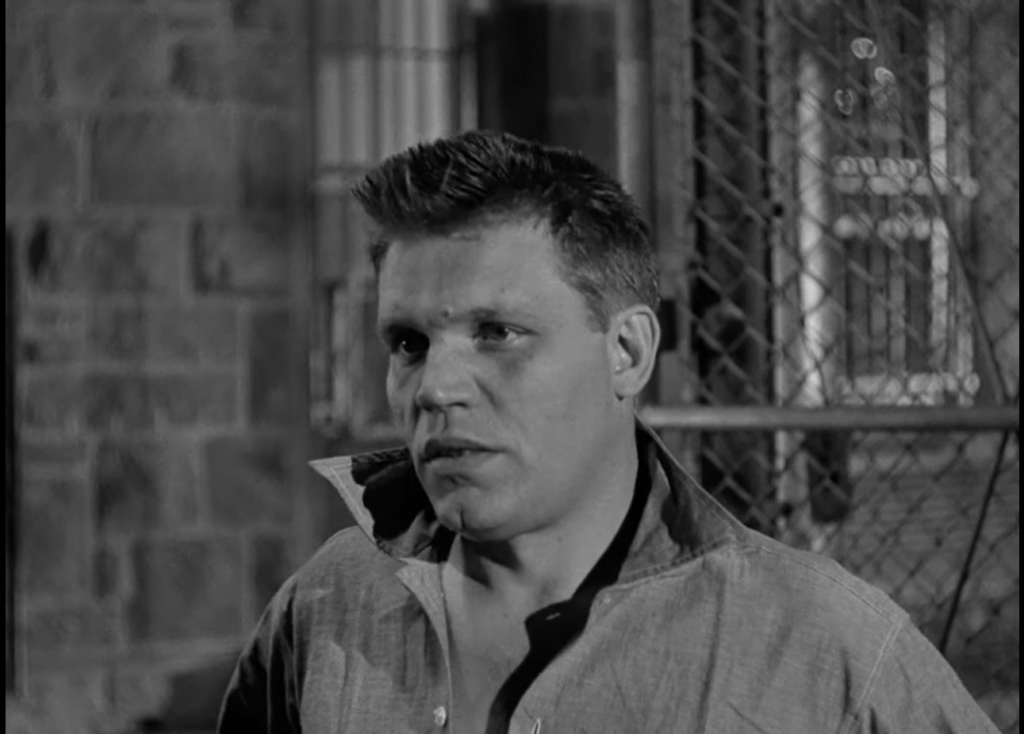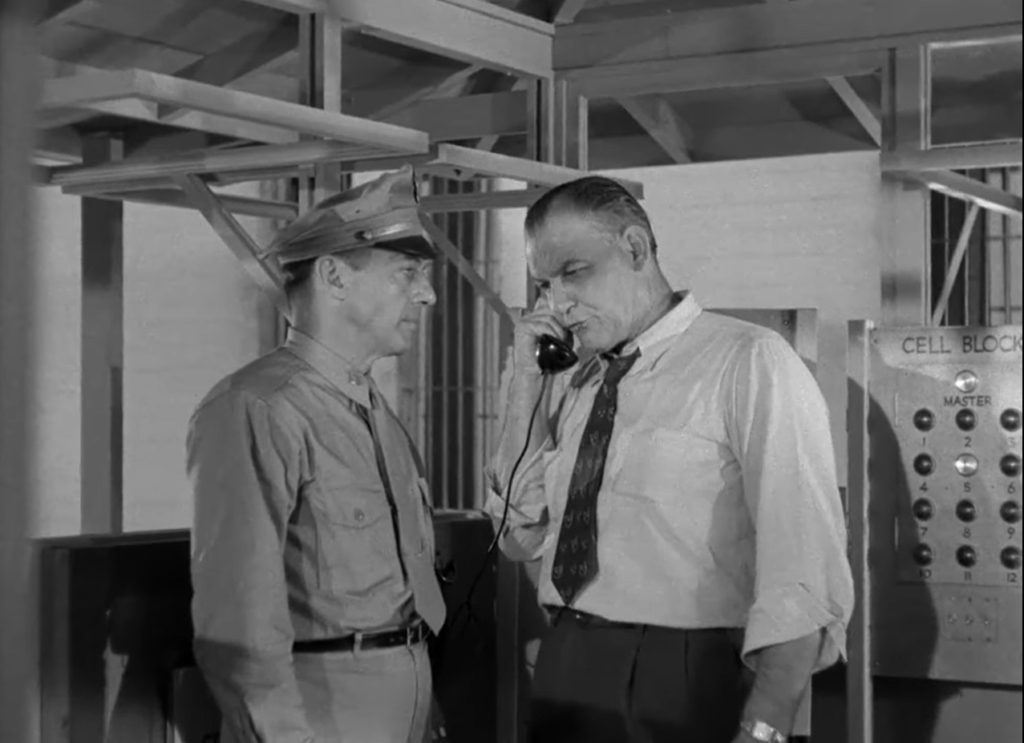“In a case like this, either the cons run the prison or the prison runs the cons.”
|

Synopsis:
A group of prisoners (led by Neville Brand) riot for better living conditions; meanwhile, their sympathetic warden (Emile Meyer) tries to keep the situation under control while negotiating with both Brand and his superiors.
|
|
Genres, Themes, Actors, and Directors:
- Don Siegel Films
- Neville Brand Films
- Prisoners
- Rebellion
Review:
Don Siegel’s compelling, hard-hitting drama manages to humanize the diverse protagonists on both sides of the title controversy. The focused storyline effectively shows how easily inmates (with just a bit of advance organization) are able to physically overtake their understaffed guards — and how quickly their rebellion spreads to the other cell blocks in their overcrowded prison. Real-life war hero Neville Brand is perfectly cast as the leader of the riot; he’s a sympathetic, savvy, yet violent inmate who remains eerily focused on the task at hand. Meanwhile, the prison’s decent warden (nicely under-played by Emile Meyer) is both well-meaning and surprisingly humble, someone who understands the sticky situation he’s in — he’s battled for better conditions and more funding for years — and is simply trying to avoid as much bloodshed as possible. There are many moments of genuine tension throughout this gritty social drama, which only occasionally dips into didactic “message” mode, and features a realistically bittersweet ending.
Redeeming Qualities and Moments:
- Neville Brand as the riot leader

- Emile Meyer as the humane warden of the prison

- An effective portrayal of controversial conflict


Must See?
Yes, as both a powerful prison flick, and for its historical importance as Don Siegel’s first major film. Listed as a Cult Movie and a Personal Recommendation in the back of Peary’s book.
Categories
- Good Show
- Important Director
Links:
|
One thought on “Riot in Cell Block 11 (1954)”
A must – in complete agreement with what’s written.
There’s not a dull or lull moment here; it’s almost cinema verite.
Neville Brand (the Gary Busey of his day, or vice versa) gives one of his strongest performances. Yet, the film is not essentially about performances – all work in unison within Siegel’s assured vision.
I esp. like the two (I think) scenes in which, during the struggle, individual prisoners have heart-to-hearts with individual guards.
In a surprising addition for 1954, recognition is given to a gay prisoner. Of course, he’s seen to be dealt with harshly – still, the image is decidedly there.